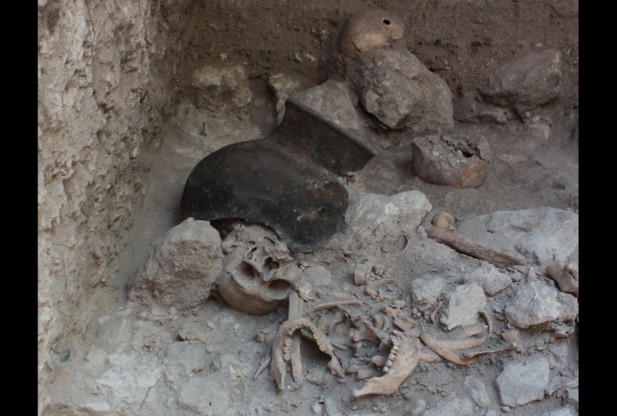
Scientists from the Department of Anthropology of the Americas at the University of Bonn discovered a mass grave in an artificial cave in the historical Maya city of Uxul containing 24 individuals who were decapitated and dismembered. The bones discovered are about 1,400 years old, and the scientists assume that the victims were either prisoners of war or nobles from Uxul itself.
The team has been excavating in the historical Maya city of Uxul in Campeche, Mexico for the past five years in hopes of researching the origins and the collapse of regional states in the Maya lowlands. Their findings indicate that the artificial cave was not always a mass grave site, but was also used as a water reservoir.
"Aside from the large number of interred individuals, it already became apparent during the excavation that the skeletons were no longer in their original anatomical articulation", says archaeologist Nicolaus Seefeld.
All of the skulls found were lying scattered around the interior of the cave, in no relation to the rest of the bodies. The majority of the lower jaws were separated from the heads, but the limbs of the legs and hands were in some cases completely preserved.
"This observation excluded the possibility that this mass grave was a so-called secondary burial, in which the bones of the deceased are placed at a new location", says Seefeld in a statement.
The scientists believe the spatial pattern of the bones indicates that the corpses of the 24 people had been decapitated and dismembered. Most of the bodies found showed signs that these people had experienced very violent deaths.
"The observed hatchet marks on the cervical vertebra are a clear indication of decapitation", Seefeld reports.
One skull shows an unhealed skull fracture, most likely caused by a blow from a cudgel. Other skulls show signs of cutting with sharp objects, which might originate from stone hatchets.
The archaeologists were even able to identify the age and sex of 15 of the 24 individuals due to how well-preserved they were. Thirteen of the 15 identified were men and two were women between ages 18 and 42. An analysis of the teeth showed that several of the deceased suffered from malnutrition and lost several teeth due to tooth decay.
Some of the deceased had inserts of jade, which the scientists say is a sign of high social status. They are still not sure if the remains belonged to prisoners of war or from another Maya city that was sacrificed in Uxul.
"However, the discovery of the mass grave proves that the dismemberment of prisoners of war and opponents often represented in Maya art was in fact practiced", says Prof. Nikolai Grube.



Reader Comments
to our Newsletter